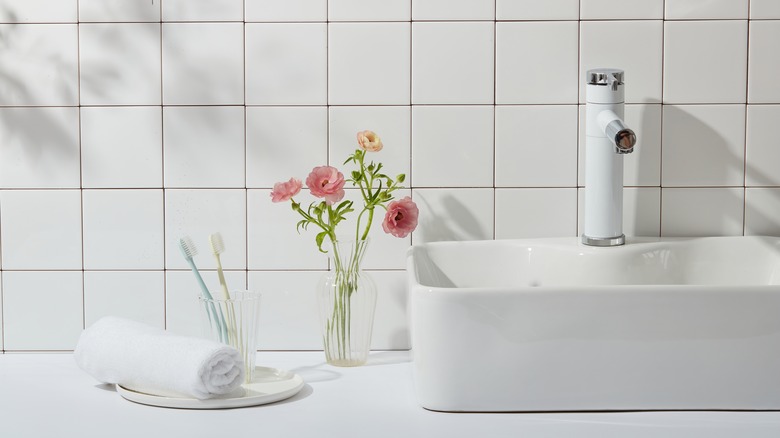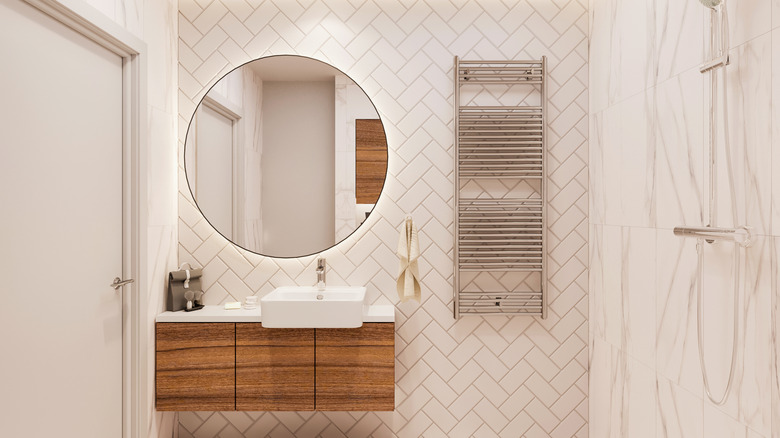Use Hilary Farr's Genius Trick To Refresh Your Outdated Bathroom Tile
It's no secret that bathroom remodels can be pricey. So, when it comes to updating an outdated bathroom on a budget, any tips are welcomed. Luckily, Hilary Farr from HGTV's "Tough Love With Hilary Farr" had a brilliant idea to breathe new life into her clients' children's bathroom. The yellow tiles on the walls gave the bathroom a vintage look, but not in a good way. Instead of ripping all the tiles off the walls, Farr opted to reglaze them to brighten and modernize the space. "You know, we didn't have a lot of money to do this bathroom," Farr says to her clients in season one, episode eight of "Tough Love With Hilary Farr." "There was all that tile, and that yellow, and that . . ugh. So, all we've done is reglaze," per HGTV.
The simple solution to cosmetically upgrade the bathroom walls and floor costs much less than re-tiling. Reglazing tile typically costs between $4 and $10 per square foot when being done by a contractor. However, the project can also be DIYed and basic reglazing kits cost between $100 to $150. Reglazed tile can last between 10 and 15 years, so it's a good investment for bathroom upgrades.
Reglazing bathroom tile
Reglazing is a great, budget-friendly option and a fun project to DIY. The process involves using an epoxy or resin coat over the old tiles. When cured, it has a porcelain-like finish. However, not every tile is a candidate for reglazing — it's important to note that it won't fix cracked, chipped, or gouged tiles, so the tile you reglaze should be in good condition. Reglazing also works best on ceramic and porcelain tile rather than materials like glass or natural stone. While Farr reglazed the tile on the bathroom walls, you can also reglaze the tile in the shower and on the floor to give it a new look.
The process of reglazing tile involves sanding and cleaning the tile before applying the epoxy resin with a paint roller. If you're going to do the project yourself, good ventilation is essential, so open all the windows and use fans to remove the fumes. You should also wear a P100 respirator for extra protection. Though this is a relatively simple DIY, the product can be tricky to work with, so hiring a professional will often lead to the best and smoothest results.

